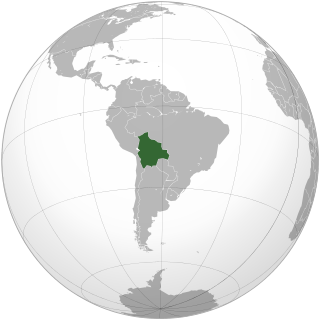| Bolivian Spanish | |
|---|---|
| Español boliviano | |
| Pronunciation | [espaˈɲol βoliˈβjano] |
| Native to | Bolivia |
Native speakers | 4.1 million (2014)[1] 4.5 million in Bolivia (2014) |
| Latin (Spanish alphabet) | |
| Official status | |
Official language in | |
Recognised minority language in | |
| Regulated by | Academia Boliviana de la Lengua |
| Language codes | |
| ISO 639-1 | es |
| ISO 639-2 | spa[2] |
| ISO 639-3 | – |
| Glottolog | None |
| IETF | es-BO |
 | |
Bolivian Spanish (or Castilian) is the variety of Spanish spoken by the majority of the population in Bolivia, either as a mother tongue or as a second language. Within the Spanish of Bolivia there are different regional varieties. In the border areas, Bolivia shares dialectal features with the neighboring countries.
Throughout Bolivia the preservation of phonemic contrast between /ʝ/ and the lateral /ʎ/ (i.e. the absence of yeísmo) is the norm.[3][4] Aspiration of syllable-final /s/ is frequent in the lowlands, while in the highlands the sibilant /s/ tends to be preserved, realized either as a laminal or, frequently, an apical [s].[4][5] In highland dialects, the "trill" phoneme (orthographic ⟨rr⟩ or word-initial ⟨r⟩) is often assibilated, realized as a voiced apicoalveolar fricative,[5][6] or alveolar approximant, which pronunciation is similar to the sound of ⟨r⟩ ([ɹ]) in English. In highland Bolivian Spanish there is "intense reduction" of unstressed vowels in contact with /s/, often resulting in syllables with /s/ as their nucleus, e.g. pues ("well,...") pronounced [ps].[4][7]
- ^ Spanish → Bolivia at Ethnologue (18th ed., 2015) (subscription required)
- ^ "ISO 639-2 Language Code search". Library of Congress. Retrieved 21 September 2017.
- ^ Canfield 1981:28
- ^ a b c Lipski 1994:188
- ^ a b Canfield 1981:29
- ^ Lipski 1994:189
- ^ Canfield 1981:29–30